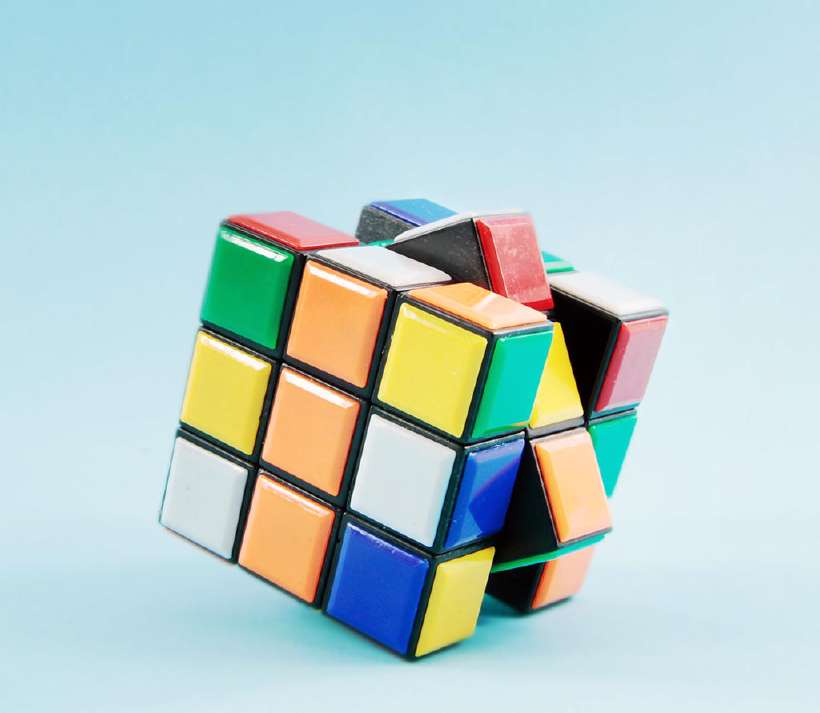What is the Rubik's Cube?
Home / Science for Kids / 5Ws & H For Kids / What is the Rubik's Cube?
My nephew Akshay was a brat. No two ways about it. When he was not occupied with dismantling everything that moved, ticked, or clicked he would be engaged in stuffing an icecube down your shirt when you were busy working on whatever it is that didn’t involve him.
After a lot of thought, my uncle and I decided to purchase something that would rack his brains till kingdom come. We scouted the market for all sorts of things and luckily we came to a shop that sold a colourful cube – the Rubik’s cube.
Akshay was overjoyed at this new acquisition. He was lost to the world and every waking moment was spent trying to get the colours of the cube in order.
![What is the Rubik's Cube? [Illustration by Shiju George]](/media/5wh-70_1_hu1669de6abebf553e5fedd878e9f627ab_11032_820x0_resize_q60_box.gif)
No dice! He was truly stuck. He was loath to give up and admit he was lost. Days turned to weeks and into months. In sheer frustration he asked: just what is the Rubik’s cube?
The Rubik’s cube was invented in 1975 by Erno Rubik, an Architecture Professor at the Budapest School of Commercial Art, in Hungary. It is a six-sided multi-coloured object that splits into three rows and three columns. Each row or column is capable of turning a full circle of 360 degrees.
Thus each side is made of nine squares. Each side of the cube has a certain colour and when the rows and columns are rotated, these colours then shift to another side.
The object of the game is to twist or rotate the multi-coloured cube and find a way to get all the sides to have a uniform colour. The orange side should have all nine squares orange, another should have all white and so on.

The problem with the cube was that there were over 43,252,003,274,489,856,000 possible positions into which the cube could be manipulated. It was not easy to find a solution to this cube. A wrong twist and the entire side changed colours!
Erno Rubik wanted to teach aspects of 3-dimensional objects to architecture students. So he devised this cube and applied for a patent in 1975. The cube soon became a rage in Hungary. Rubik then figured, why not market it in Europe?
So he contacted toy manufacturers in Europe and America. Ideal Toys contracted Rubik to produce it for the United States market. By 1980, the cube was the fastest selling toy in the market and shopkeepers couldn’t keep pace with the demand!
In 1980 alone, the cube sold over 4.5 million units! Pirated versions began overtaking the original. Solving the cube in the fastest possible time soon became a fad and to help achieve this, several books were published giving the final solution and hints to achieve this in the shortest possible time.
There were cases of solving the cube within a minute. A downslide to the popularity of the cube was that people developed painful muscular problems called tendinitus due to constant twisting and turning of the wrist!
Unfortunately overexposure killed this wonderful, mathematical toy. Some me-too products tried to take on from where the cube left off but failed to catch on.
What was meant for a classroom lecture demonstration twisted the world topsy turvy with a flick of the wrist. However, it is an excellent toy to pass the time with. And if you wish to exercise your wrist as well, there is nothing better than the Rubik’s cube to work on. Just don’t get your wrist wrested away with all the twisting.
594 words |
5 minutes
Readability:
Grade 6 (11-12 year old children)
Based on Flesch–Kincaid readability scores
Filed under: 5ws and h
Tags: #orange, #market
You may also be interested in these:
When Humans had Tails
The lazy monk — a tale from the Panchatantra
My Life – The Tale of a Butterfly